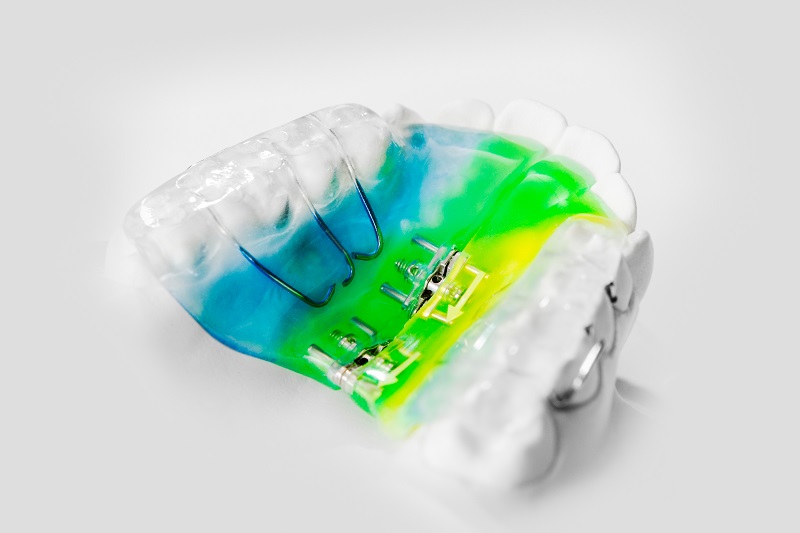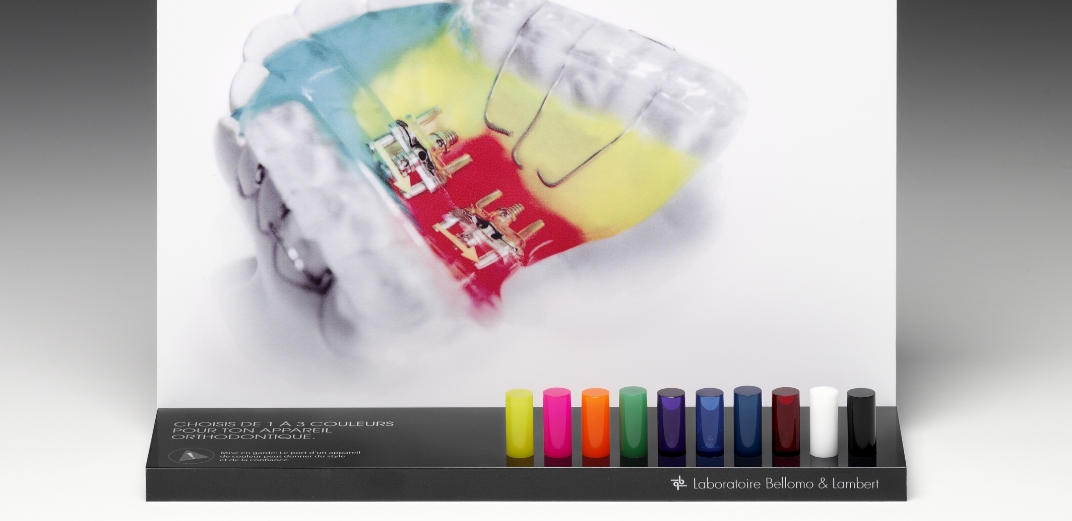Clark twin block
William Clark, an English orthodontist, is said to be the inventor of the Twin Block. His removable mandibular advancement design was imported to North America at the end of the '80s. This appliance comprises two splints that adapt on both the lower and upper arches and on which occlusal pads are fitted with a 70° inclined plane. Located on the premolars, these pads coax the mandible to protrude forward. Unlike the "monobloc" style protrusion appliances, the Twin Block is versatile. Indeed, by activating the screw, the arches can be moved one at a time or both at once. Moreover, many accessories can be added to the appliance in order to distalize, lingualize, mesialize or move one or several teeth buccally. Selective grinding of the occlusal pads enables lower posterior teeth to erupt, thus reducing the vertical overbite. The Twin Block is comfortable to wear and patient friendly. Smaller than other functional appliances, it can also be worn permanently. It has the advantage of enabling the mandible to advance without, however, preventing lateral movements. The appliance makes it easier for patients to speak
Material required for manufacturing
– Upper stone model
– Lower stone model
– Articulated protrusion wax
– maximum 8mm mandibular advancement
– minimum of 5 mm space between the molars

Available colors
Patients may choose the colour of their appliances. Regular acrylic is then replaced with coloured acrylic. One to three colours may also be chosen per appliance. These options actually encourage children to cooperate closely during orthodontic treatment




